Islam plays a central role in the daily life and culture of Saudi Arabia. The five daily prayers, fasting during the month of Ramadan, and Hajj (for those physically and financially capable) are among the religious obligations that deeply influence the social and individual lives of people.
Hospitality
Hospitality is an integral part of Saudi Arabian culture. Welcoming guests with tea, Arabic coffee, and dates signifies respect and warmth. Inviting guests into one’s home and offering the best hospitality are core values.
Traditional Attire
Men typically wear thobe, a comfortable white garment, along with a keffiyeh (headscarf) and an agal (headband). Women commonly wear an abaya in public, which is a long, black covering, and some also wear a headscarf (like a shayla or niqab).
Language
The official language of Saudi Arabia is Arabic. Saudi Arabic has several local dialects spoken in different regions of the country.
Marriage and Family
Family and marriage play a central role in Saudi Arabian society. Marriages are often organized according to local and religious traditions and customs. Close familial relationships and support for family members are highly valued.

The Kaaba, located at the center of the Masjid al-Haram in the city of Mecca, is considered the most important and sacred structure in Islam. Muslims from around the world orient themselves towards this cubic-shaped structure during their daily prayers. The Kaaba is not only the focal point of the Hajj pilgrimage, one of the Five Pillars of Islam, but also a place where Muslims journey to perform Umrah, a visit that can be undertaken at any time of the year.
History of the Kaaba
According to Islamic beliefs, the origin of the Kaaba dates back to Adam, the first human, and was later rebuilt by Abraham and his son Ishmael, both revered as prophets in Islam. The current cubic-shaped structure, with walls approximately 15 meters high and a length and width of about 10 to 12 meters, is covered with a black cloth known as the kiswah, which is replaced annually.
Religious Significance
The Kaaba is recognized as the “House of God” in Islam and serves as the focal point that gathers Muslims from around the world for the pilgrimage of Hajj. Tawaf, which involves circling the Kaaba seven times, is an integral part of the Hajj and Umrah rituals.
Mechanism and Respect
Throughout history, the Kaaba has not only been a place of worship but also a symbol of unity and brotherhood among Muslims of diverse cultural and geographical backgrounds. This sacred site reflects faith in the one God and adherence to the traditions of the Prophet of Islam, Muhammad (peace be upon him).
The Kaaba and the Masjid al-Haram surrounding it annually host millions of pilgrims from all over the world, all journeying to this site to express their faith and rejuvenate their spiritual selves.
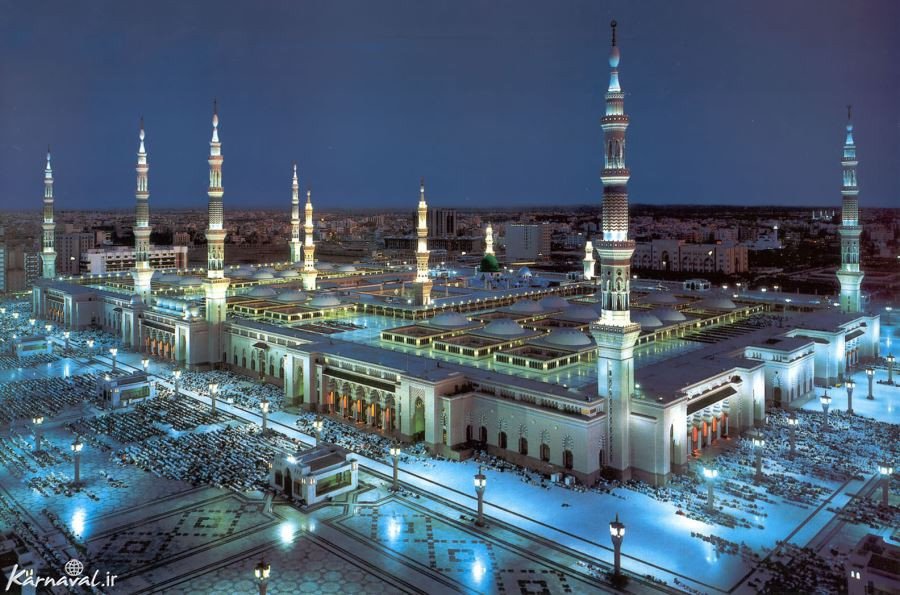
The Prophet’s Mosque, located in Medina, Saudi Arabia, is one of the holiest places in Islam. This mosque is the second holiest mosque in Islam after the Masjid al-Haram in Mecca and before the Al-Aqsa Mosque in Jerusalem. The Prophet’s Mosque is the burial place of the Prophet of Islam, Muhammad (peace be upon him), and for this reason, it holds great significance for Muslims worldwide.### HistoryThe Prophet of Islam, Muhammad (peace be upon him), himself participated in the construction of this mosque in the first year of Hijra (622 CE). The mosque was initially simple and unadorned, but over time and with the increase in the number of Muslims, it underwent significant expansion and reconstruction.### Architectural FeaturesThe Prophet’s Mosque has been developed and rebuilt several times since the time of the Prophet of Islam. One of its most iconic features is the green dome situated above the Prophet’s burial chamber. This dome was constructed in the twelfth century CE and is recognized as a symbol of the Prophet’s Mosque.### Religious SignificanceThe Prophet’s Mosque serves as a center for worship and spiritual contemplation. It is significant not only because of the Prophet’s burial chamber but also due to its association with important events in Islamic history. Visiting this mosque, especially for pilgrims, is highly revered and considered spiritually uplifting.
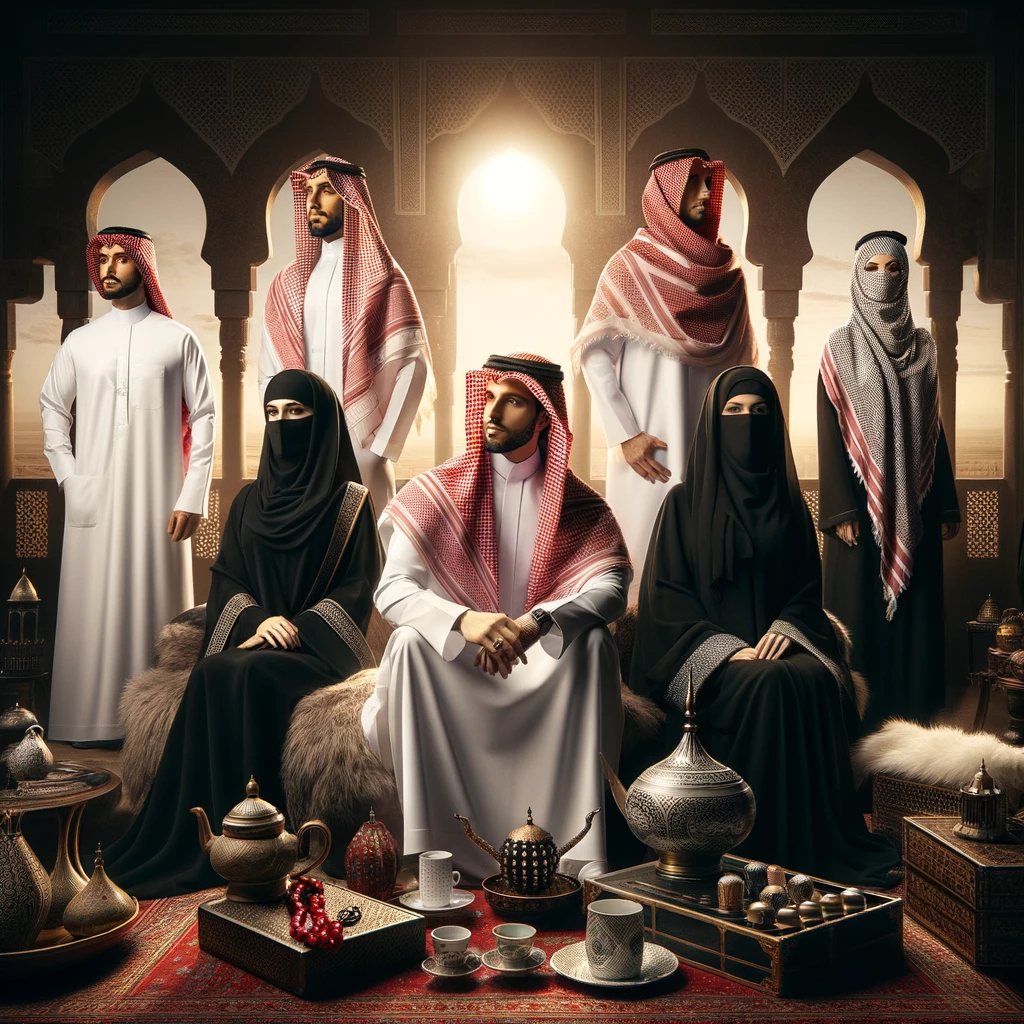
The image depicts traditional clothing worn by the people of Saudi Arabia, reflecting the beauty of important aspects of Saudi Arabian culture and traditions:- Thobe: The traditional attire for men, which is a long, white, and comfortable garment. This attire is popular due to its compatibility with the hot and dry climate of the region.- Shemagh: A red and white checkered scarf worn by men wrapped around their heads, secured with an agal, a black band. The shemagh not only serves as a fashion statement but also provides protection against the sun and sand.- Abaya: The traditional attire for women, which is a long, black cloak designed to cover the entire body except the face, hands, and feet. Abayas can range from simple to highly decorative and embellished designs.- Hijab: A head covering worn by Muslim women to conceal their hair. In this image, the hijab is seen as part of the abaya, serving as a symbol of respect for religious principles.This image, with a background likely depicting desert features or traditional Saudi Arabian architecture, showcases a combination of cultural tradition and beauty, emphasizing the importance of traditional clothing as part of Saudi Arabia’s cultural and social identity.

Philosophy of Hijab
The philosophy of hijab in Islam often revolves around goals such as preserving modesty, creating a space of mutual respect in society, and shifting the focus away from outward appearance to emphasize ethical and spiritual values. Hijab is perceived as a symbol of religious identity, a commitment to Islamic principles, and an indication of personal choice to adhere to religious injunctions.
Islamic Dress Code
While hijab often refers to head covering, the broader concept of Islamic dress code includes covering the body except for the face and hands with modest and non-provocative clothing. The aim of this type of attire is to underscore individual and moral values over outward ostentation.
People’s Beliefs
People’s beliefs regarding hijab and Islamic dress code can vary and are influenced by factors such as local culture, level of religious education and upbringing, and interpretations of Islamic jurisprudence. In some societies, hijab is accepted as an inseparable part of daily life, while in others, it may be seen as a personal choice.
Diversity and Plurality
In recent years, there have been increasing debates about the meaning and role of hijab in modern Islamic and non-Islamic societies. Some believe that hijab symbolizes cultural independence and resistance, while others emphasize personal freedom in choosing attire. This diversity of opinions reflects a wide spectrum of interpretations and lived experiences with hijab worldwide.
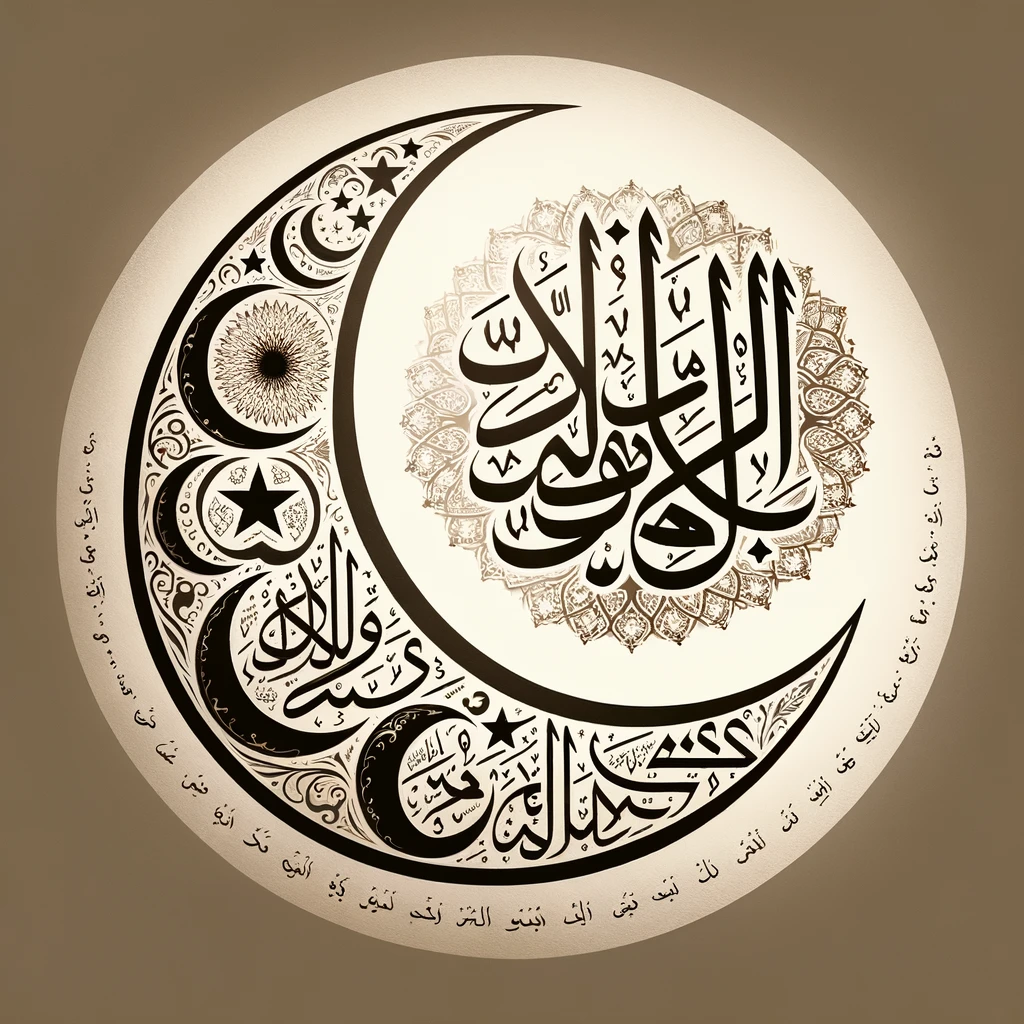
The main and official religion in Saudi Arabia is Islam. This country, known as the birthplace of Islam and home to the two holy cities of Mecca and Medina, plays a significant role in the Islamic world. Saudi Arabia holds special importance due to the presence of the Kaaba in Mecca, the holiest site for Muslims, and the Prophet’s Mosque in Medina, the burial place of the Prophet of Islam, Muhammad (peace be upon him). Implementation of ShariaIn Saudi Arabia, laws are enforced based on Islamic Sharia, which includes strict boundaries and punishments for various crimes. This includes offenses such as theft, adultery, and alcohol consumption.- Theft Punishment: In cases of theft where all the Sharia conditions for implementing the punishment are met, the punishment for theft can include amputation of the right hand from the wrist. This punishment is applied for major thefts and requires conclusive evidence.- Adultery Punishment: The punishment for adultery for married individuals is stoning to death, while for unmarried individuals, it can involve flogging. To prove the crime of adultery, there needs to be the testimony of four just witnesses or the confession of the accused individual.- Alcohol Consumption: Alcohol consumption is entirely prohibited in Saudi Arabia, and its punishment can include heavy fines, imprisonment, and flogging. The severity of the punishment depends on the seriousness of the offense and the decision of the court.

Climate of Saudi Arabia
Saudi Arabia is predominantly characterized by a desert climate, with extremely hot and dry summers and moderate winters. Temperatures in summer can exceed 50 degrees Celsius, especially in inland and desert areas. Conversely, winters are mild and sometimes cold, with limited rainfall in some regions. Rainfall in Saudi Arabia is scarce and mostly occurs during the winter and early spring.
Vegetation Cover
Due to its dry and desert climate conditions, vegetation cover in Saudi Arabia is limited. However, in areas with water sources such as valleys and around springs, various types of unique plants and trees can be found. This includes date palm trees, acacia trees, desert shrubs, and drought-resistant grasses.
Dates
One of the most iconic and important agricultural products of Saudi Arabia is dates. The country is one of the largest date producers in the world. Date palm, which is well-adapted to the dry and desert climate conditions, plays a significant role in the economy and nutrition of the region. Saudi Arabia has numerous varieties of dates, each with different tastes, sizes, and qualities. Dates are not only consumed as food but also hold a special place in celebrations and religious occasions.
Overall, despite its dry and desert climate conditions, Saudi Arabia has managed to achieve significant successes in sectors such as date farming through the utilization of available water resources and modern technologies.
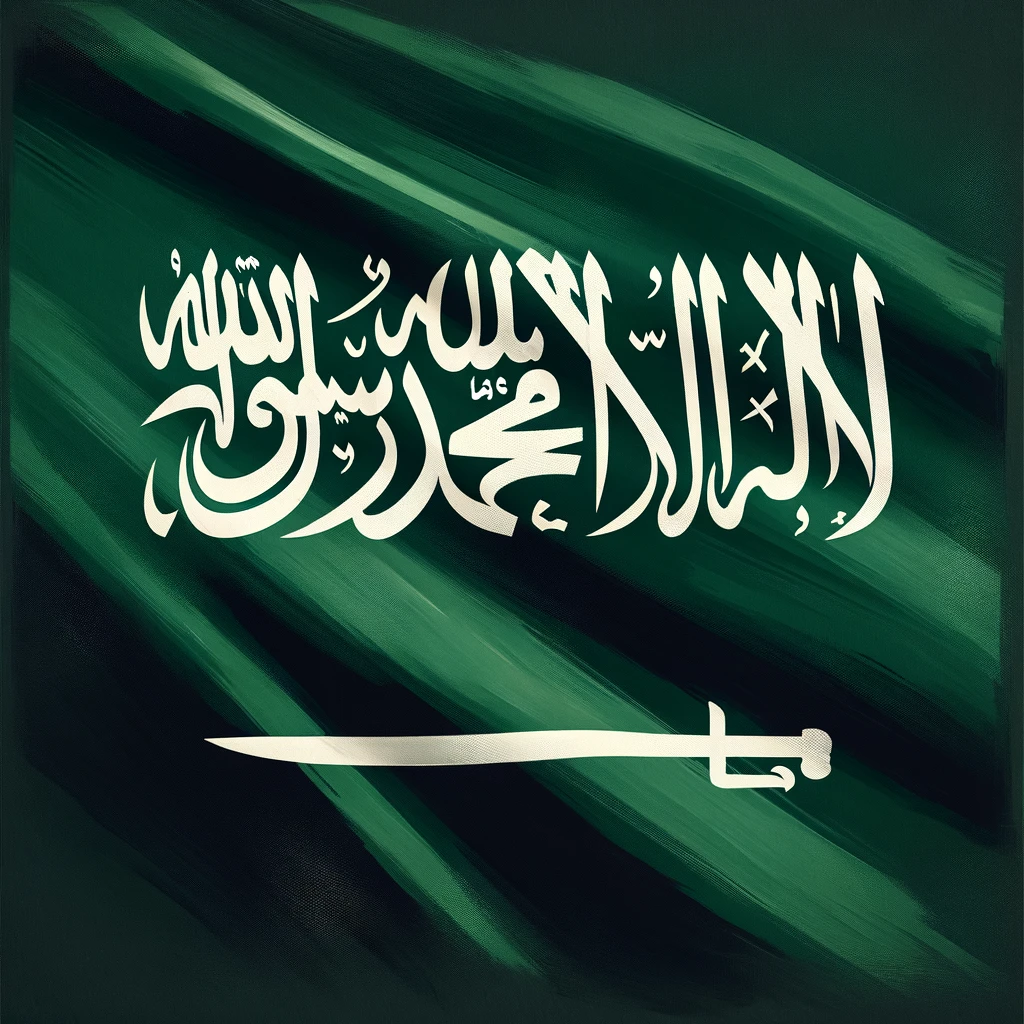
The image shown depicts the national flag of Saudi Arabia with detailed and realistic descriptions. The bright green background of the flag is a symbol of Islam and the deep cultural heritage of Saudi Arabia. On this background, the Shahada – “There is no god but Allah, and Muhammad is the messenger of Allah” – is written in white Arabic script beautifully, expressing the fundamental beliefs of Islam. Below the Shahada, a white sword is placed, symbolizing power and justice.The flag is designed in a way that not only represents the national identity of Saudi Arabia but also reflects the values and religious beliefs of its people. The use of colors and symbols in this flag emphasizes the importance of Islam as an integral part of Saudi culture and governance, highlighting the deep connection between religion and state in this country.

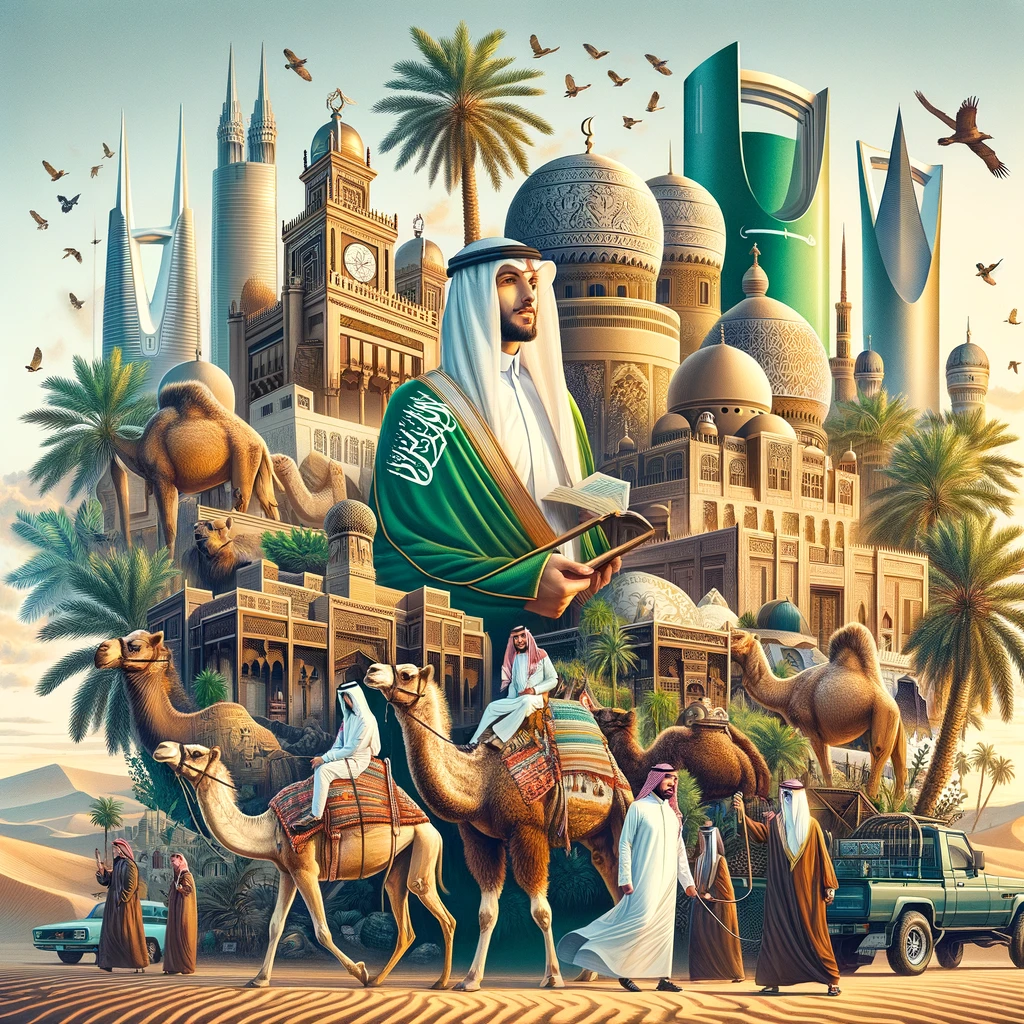
Leave a Reply